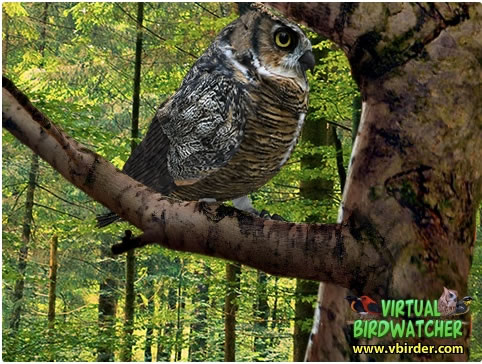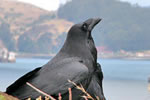
Description |
My first encounter with a great horned owl was something magical. As I walked through the deciduous forest of Latodami Nature Preserve in Pittsburgh, Pennsylvania, I noticed a great shadow pass over the concrete path below me. My first thought was that of an airplane or maybe a large turkey vulture. When I looked up into the tree, I was floored by the great owl, and its large yellow eyes that were clealry visible from 50 feet below. The great horned owl is the largest owl normally seen in the eastern United States. Variable in size and color, some great horned owls can measure 27 inches in length, far larger than the crows that regularly mob it. The great horned owl is mostly brown, with black streaks and bars throughout its body. It has large yellow eyes, and prominent ear tufts, that in actuality are not used for hearing. Its talons are covered with feathers and are among the largest of all North American birds of prey. |
Diet |
| The great horned owl is one of America’s most formidable predators, devouring everything from small mammals to skunks, rabbits, other hawks and owls, and even, on occasion, house cats. The great horned owl normally takes over an old hawk, eagle, or heron nest, and may breed in winter’s coldest months. Like all owls, the presence of the great horned owl may be revealed by collections of pellets (indigestable packages of bones, hair, and fur) underneath their roosts. |
Habitat |
| The great horned owl is found in virtually any kind of habitat including urban and suburban, desert, tundra, mountains, and forests. |
Range |
| The great horned owl is fairly common and widepsread, but difficult to observe during daylight hours. |
 |
 |
 |
 |
 |
 |
 |
 |
 |
 |
 |
 |
 |
 |
 |